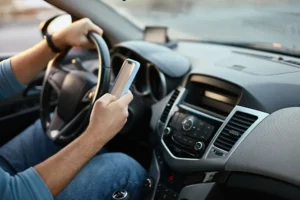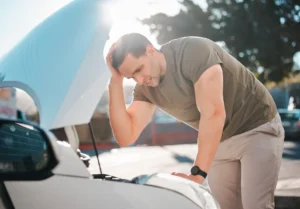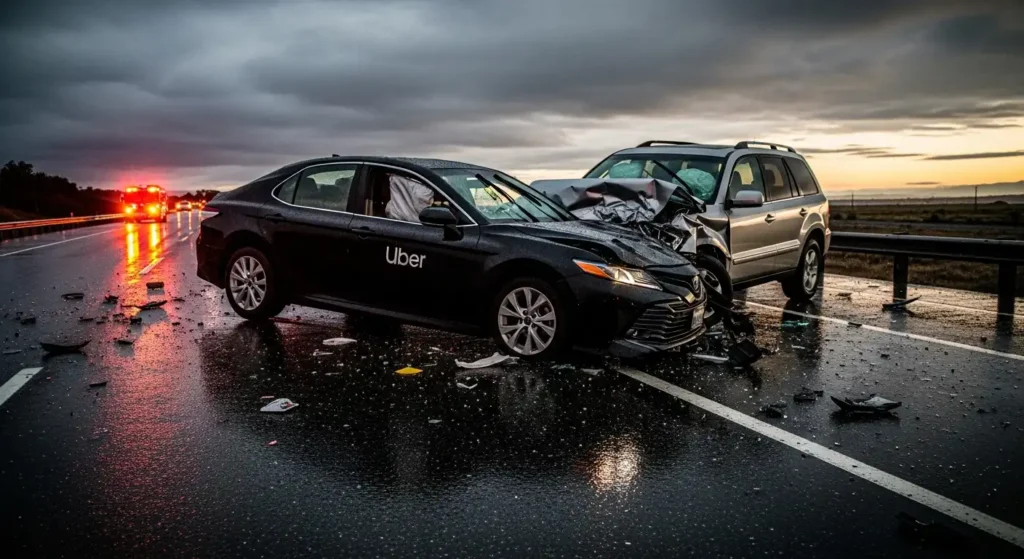Uber and other rideshare platforms have changed the way people travel in cities. It’s now easy to book a ride using your phone, making it quick and often cheaper than traditional taxis. While this increase in rideshare usage has transformed urban transportation, it also brings new safety challenges that both riders and drivers need to address.
The Rise of Uber Accidents
Reports of Uber accidents are increasing. With more vehicles operating on tight schedules and driving through unfamiliar neighborhoods, traffic incidents involving rideshare drivers are becoming a growing concern for passengers and authorities.
Understanding the Purpose of This Article
This article focuses on the 5 Common Causes of Uber Accidents—and How to Stay Safe. Whether you drive for Uber or use it as your primary mode of transportation, you’ll find practical advice here to help you avoid the most common dangers. Our aim is straightforward: identify the key risks behind Uber accidents and provide you with practical safety tips to ensure every ride is as safe as possible.
1. Distracted Driving Among Uber Drivers
 Distracted driving Uber incidents remain a leading concern for rideshare safety. Modern rideshare drivers juggle multiple tasks behind the wheel—navigation apps, incoming ride requests, and communication with both passengers and the Uber platform itself. The temptation to glance at a smartphone while driving is strong, especially when drivers rely on these devices for maps and real-time updates. Other distractions like eating meals between fares or reaching for controls on the dashboard further increase risk.
Distracted driving Uber incidents remain a leading concern for rideshare safety. Modern rideshare drivers juggle multiple tasks behind the wheel—navigation apps, incoming ride requests, and communication with both passengers and the Uber platform itself. The temptation to glance at a smartphone while driving is strong, especially when drivers rely on these devices for maps and real-time updates. Other distractions like eating meals between fares or reaching for controls on the dashboard further increase risk.
Smartphone use while driving is one of the most common distractions affecting Uber drivers. Even a brief look away from the road to check directions or respond to a message can lead to missed signals, sudden stops, or collisions in busy city environments. Rideshare driver distractions are compounded by unpredictable passenger requests or changes in destination, requiring constant attention to the app.
Passengers can help reduce these risks by:
- Avoid asking questions that require immediate answers while moving
- Not encouraging multi-tasking, such as taking calls or adjusting music mid-ride
- Speaking up if you notice unsafe behaviors—politely reminding your driver to focus
A safer ride starts with both parties recognizing that undivided attention behind the wheel prevents accidents. Small changes in behavior contribute directly to safer journeys for everyone in the car.
2. Fatigue and Long Working Hours
Many Uber drivers put in long hours to earn more money or meet bonus goals during busy times. It’s common for them to drive late at night, early in the morning, or back-to-back after another job. This leads to Uber driver fatigue, which is a serious safety risk that often goes unnoticed by passengers.
How Fatigue Affects Driving
When a driver is tired, their reaction times slow down, their attention span decreases, and their decision-making abilities are impaired. Tired rideshare drivers may have difficulty noticing hazards, misjudging traffic signals, or failing to stop suddenly when necessary. These small mistakes can result in rear-end collisions, swerving into other lanes, or not seeing pedestrians crossing the street.
How to Combat Fatigue
Staying alert to signs of fatigue can make a real difference:
For Drivers:
- Schedule regular breaks during long shifts.
- Take short naps or stretch outside the vehicle to refresh your focus.
- Avoid consecutive night shifts if possible.
For Passengers:
- Pay attention to signs of tiredness in your driver—such as yawning, drifting between lanes, or slow responses in conversation.
- If you sense that your driver is struggling to stay awake, don’t hesitate to speak up or request a break.
By understanding how fatigue impacts driving safety, both riders and drivers can take simple steps to reduce the risk on every trip.
3. Speeding and Aggressive Driving Behavior
Pressure to maximize fares and complete more rides per hour can lead some Uber drivers to adopt speeding or aggressive driving tactics. The nature of rideshare work, with its reliance on dynamic pricing and ride completion pressure, creates an environment where time is money.
This sometimes encourages risky behaviors such as:
- Exceeding speed limits to reduce trip duration
- Rapid lane changes or tailgating in congested traffic
- Ignoring stop signs or yellow lights to maintain momentum
Urban settings amplify these risks. City streets are dense with pedestrians, cyclists, and frequent intersections—making any instance of speeding exponentially more dangerous. Aggressive maneuvers significantly increase the odds of collisions, not just with other vehicles but also with vulnerable road users.
Passengers play a critical role in promoting safety during rides. If you notice a driver engaging in aggressive driving or consistently exceeding speed limits:
- Calmly ask the driver to slow down or drive more cautiously
- Avoid pressuring drivers to rush or take shortcuts
- Use the Uber app’s feedback feature to report unsafe behavior
A culture of safety starts with accountability. Riders who speak up about unsafe practices help reinforce responsible driving norms for everyone using Uber and other rideshare platforms.
4. Inexperienced or Reckless Driving Practices Among Uber Drivers
Adapting to the pace and demands of rideshare driving can challenge even experienced motorists. For inexperienced Uber drivers, the transition involves learning new routes, understanding local traffic laws, and responding quickly to app notifications—all while maintaining passenger safety. Some new drivers underestimate how different professional driving is from occasional personal use.
Common reckless driving accidents linked to inexperience include:
- Failing to yield at intersections, especially when navigating unfamiliar neighborhoods
- Running red lights or stop signs in an attempt to save time
- Abrupt lane changes without signaling
- Over-reliance on GPS, leading to last-minute turns or missed exits
Passengers can play an active role in ensuring their own safety:
- Assess your driver’s behavior before the trip starts. If you notice speeding through residential areas or ignoring clear traffic signs, speak up.
- Check the driver’s rating and reviews within the Uber app; consistent complaints about dangerous driving are a red flag.
- Trust your instincts. If a driver appears distracted, aggressive, or overly nervous behind the wheel, consider cancelling the ride and requesting another driver.
Paying attention to these warning signs supports safer journeys and helps reduce incidents caused by reckless or unskilled driving practices.
5. Vehicle Maintenance Issues and Road Conditions Affecting Uber Safety
 Mechanical failure accidents can occur unexpectedly, often due to skipped maintenance or overlooked repairs. Vehicle maintenance for Uber drivers is not just a recommendation—it’s a necessity. Essential safety checks include:
Mechanical failure accidents can occur unexpectedly, often due to skipped maintenance or overlooked repairs. Vehicle maintenance for Uber drivers is not just a recommendation—it’s a necessity. Essential safety checks include:
- Regular brake inspections
- Tire pressure and tread assessments
- Functionality tests for headlights, taillights, and signals
- Oil changes and fluid level checks
When these routines are ignored, risks increase for everyone in the vehicle.
Weather plays a critical role in rideshare safety. Rain, snow, or icy roads dramatically reduce traction and visibility. Even experienced drivers can be caught off guard by slick streets or sudden downpours. During poor weather conditions, Uber passengers may notice longer braking distances or reduced control.
You have options to stay safe:
- Inspect the car yourself before boarding—worn tires or dim lights are red flags.
- If the vehicle looks poorly maintained or you feel unsafe, cancel the ride and request another.
- During bad weather, remind your driver to slow down and drive cautiously.
- Use the app’s reporting feature if you believe the car isn’t roadworthy.
Keeping an eye out for signs of neglect helps prevent mechanical failure accidents and promotes safer rides for everyone on the road.
What To Do After an Accident Involving an Uber Driver – Safety & Legal Steps
When an accident involving an Uber driver happens, knowing the right steps to take can make a significant difference for your health and any future claims. Immediate action is key.
1. Check for Injuries and Call Emergency Services
- Prioritize safety by checking yourself and others for injuries.
- Dial 911 if anyone needs medical attention or if there’s substantial vehicle damage.
2. Document the Scene Thoroughly
- Take clear photos of all vehicles involved, license plates, driver’s licenses, damage, road conditions, and any visible injuries.
- Write down details about the accident location, time, and sequence of events while they’re fresh in your mind.
3. Report the Accident
- Notify law enforcement so there’s an official record.
- Use the Uber app to report the crash. This step helps kick-start Uber’s insurance process and ensures documentation on their end.
4. Exchange Information
- Collect names, contact info, insurance details, and license numbers from all drivers.
- If witnesses are present, ask for their contact information as well.
5. Contact Your Insurance Company Promptly
Inform your insurance provider about the incident, even if you weren’t at fault.
6. Seek Legal Guidance
Consulting a personal injury attorney with experience in rideshare accidents can help clarify your rights and next steps toward compensation.
Staying organized with evidence and records lays a strong foundation for any necessary insurance or legal actions after an accident involving an Uber driver. This approach supports both immediate recovery and longer-term protection as you navigate what comes next.
Conclusion
Taking proactive steps can make a real difference in your safety as a passenger or driver. Understanding the “5 Common Causes of Uber Accidents—and How to Stay Safe” means making small choices that add up:
- Remind yourself and your driver to avoid distractions.
- Spot signs of fatigue before getting into a vehicle.
- Encourage safe speeds and calm driving, even during peak times.
- Assess your driver’s competence—trust your instincts if something feels off.
- Speak up about unsafe vehicle conditions or challenging road environments.
Rideshare convenience should never come at the cost of personal safety. Prioritize communication and situational awareness every time you ride. When you take simple steps to stay safe during your next ride using Uber, you protect not just yourself but everyone on the road. Your choices matter—choose safety first.

